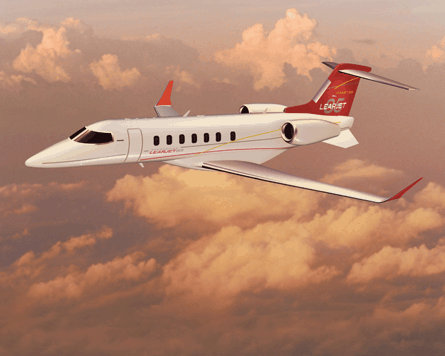Bombardier says it remains on track in the post-Grob era to certificate and put into service in 2013 its fastest, largest and most expensive Learjet model to date, the Learjet 85. The first clean-sheet Learjet design in more than a decade, the eight-passenger twinjet will also be the first all-composite business jet certificated under US Federal Aviation Administration Part 25 rules.
Grob Aerospace, the German composites specialist, had been on tap to design and test the business jet's structure as well as build prototypes and early production units. However, Bombardier parted ways with the company in September 2008 after Grob filed for insolvency, deciding instead to develop and build the prototypes on its own.
The new plan calls for the work to be divided among four facilities: Bombardier in Montreal will be responsible for the engineering detail design and structure certification, with help from Wichita's National Institute for Aviation Research, which will build structural test rigs and perform certification of the "pre-preg" composite materials. Bombardier's facility in Queretaro, Mexico will build the prototype and production fuselages, wings, horizontal stabilisers and electrical harnesses. The company's Wichita facility will take care of final assembly, painting and test-flight activities, as well as help Montreal with the design activities.
 |
|---|
© Bombardier |
Along with selecting the composite materials for various components, Bombardier says it has also completed a "first pass" on the aircraft's weight and fuel volume, defined fuselage joint configurations, including the wing-fuselage joint, and has completed the wing geometry, stringer definition and joint and splices definition.
High-speed windtunnel tests have verified that the Pratt & Whitney Canada PW307B-powered aircraft should reach its targeted maximum cruise speed of M0.82, 1% faster than today's Learjet top speed of M0.81, says Learjet vice-president and general manager David Coleal. The aircraft's speed advantage will come from not only from the more powerful engines, but also from a new aerofoil design that Bombardier calls "fourth-generation supercritical".
The wing itself has a span of 18.75m (61.5ft), 40% longer than the Learjet 60XR's wing, and will have greater sweep. Each side will have two Fowler flaps, two spoilers, partially used for roll control, and no slats. Coleal says the aerofoil design is similar to that of the Challenger 300, but "refined" by results from computational flow dynamics results and windtunnel testing. Coleal says engineers have also completed the design of removable winglets that are more curved, or blended, compared with the winglets on today's models.
For icing protection Bombardier plans to use engine bleed air for the wing leading edges, but will move to electro-magnetic expulsion de-icing system (EMEDS) built by New York state-based Cox for the horizontal stabiliser, the first application of EMEDS for Bombardier.
 |
|---|
In the cockpit, the company is considering whether to make enhanced vision and head-up displays available as optional equipment for the Rockwell Collins Pro Line Fusion-based avionics suite, features that could allow operators to qualify for lower approach minimums.
Bombardier had considered moving to fly-by-wire design and side-stick controller for the Learjet 85, but prompted by customer input, selected a traditional control yoke and control cables, although brake-by-wire will be included. "If you're a Learjet owner, you really like the rock-and-roll ride," says Bombardier's Ralph Acs, vice-president for the Learjet 85 programme.
See what David Learmount has to say on the subject in his post "Digital versus delightful"
Source: Flight International
















